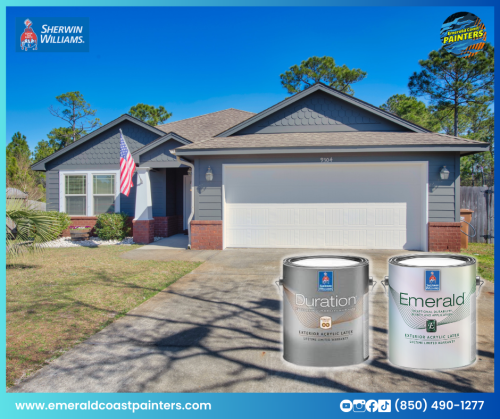Blog 19
Introduction:
Your house's paint not only enhances its appearance but also protects it from the elements. To ensure your hard work lasts for years, follow these top techniques for making your house paint last longer.

Choose High-Quality Paint and Primer:
Using premium paint and primer is essential for a durable paint job. High-quality products offer better adhesion, coverage, and color retention. Additionally, consider the surface you're painting and choose the appropriate paint type, such as latex, acrylic, or oil-based. Always use a suitable primer to create a smooth and even base for the paint.
Sherwin-Williams is another reputable brand known for its high-quality paint and primer products. One of their top-performing products in this category is the "Sherwin-Williams Duration Home" line.

Proper Surface Preparation:
Preparing the surface before painting is crucial for the longevity of your paint job. Start by thoroughly cleaning the surface to remove dirt, grime, and any loose paint. For older surfaces, strip away peeling paint and sand the area for better paint adhesion. Don't forget to repair any cracks or imperfections before proceeding.
Use the Right Tools and Techniques:
Having the right tools and knowing the proper techniques can make a significant difference in your paint's longevity. Choose brushes, rollers, or sprayers that match the surface and paint type. Use long, even strokes while applying the paint to avoid streaks or uneven coverage. If using a brush, paint in the direction of the wood grain for a smoother finish.
Apply Multiple Coats of Paint:
One coat of paint might not be enough for a long-lasting finish. Applying multiple coats ensures better coverage and durability. Allow each coat to dry completely before adding the next, and consider lightly sanding the surface between coats for improved adhesion.
Paint in Ideal Weather Conditions:
Weather conditions can affect paint drying and adhesion. Avoid painting in extreme temperatures or high humidity, as it may lead to paint failure. Optimal conditions include temperatures between 50°F and 90°F and humidity levels below 50%. Painting on a dry day with moderate temperatures will give you the best results.
Perform Regular Maintenance:
Inspect your painted surfaces regularly for signs of wear, cracking, or peeling. Address any minor issues promptly by touching up the paint. Additionally, clean painted surfaces gently using mild soap and water to prevent the buildup of dirt and grime.
Protect Painted Surfaces:
High-traffic areas, such as doors and handrails, are more susceptible to wear. Protect these surfaces by applying a clear protective coating. Moreover, shield your paint from harmful UV rays and moisture, which can cause fading and paint deterioration over time.
Store Leftover Paint Properly:
If you have any leftover paint after completing your project, store it properly for future touch-ups. Seal the paint can tightly and store it in a cool, dry place away from direct sunlight. Make sure to label the can with relevant information, including the paint color and the room it was used in.
Troubleshooting Common Paint Problems:
Despite your best efforts, sometimes paint problems may occur. If you notice peeling, cracking, or fading, identify the root cause and address it. Common causes include poor surface preparation, using low-quality paint, or unfavorable weather conditions. By understanding the issue, you can take the appropriate steps to rectify the problem and prevent it from happening again.
Conclusion:
By following these top techniques for making your house paint last longer, you can enjoy a beautiful and durable paint job that stands the test of time. Proper preparation, high-quality materials, and regular maintenance are the keys to preserving the vibrancy and integrity of your house paint for years to come.